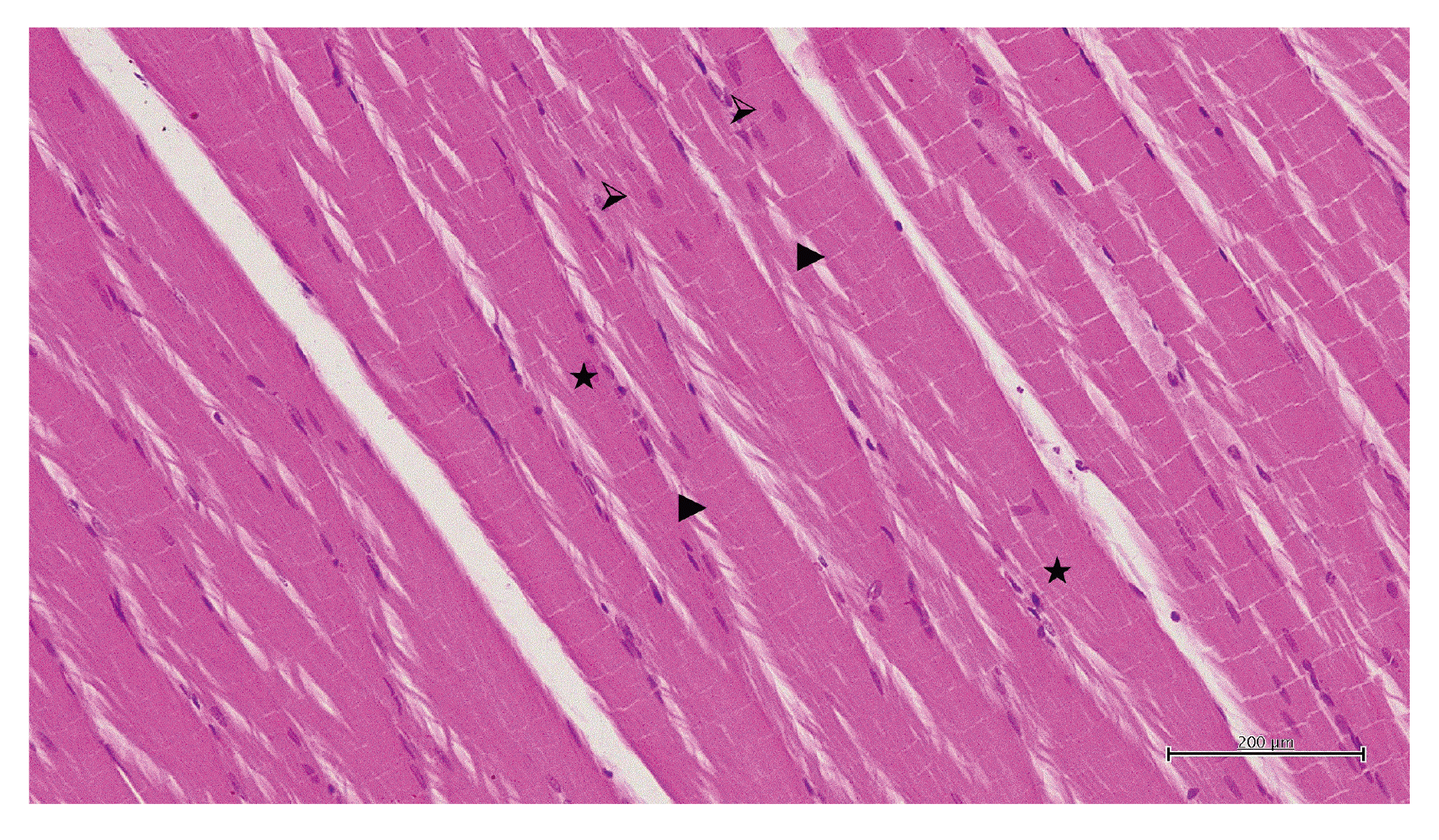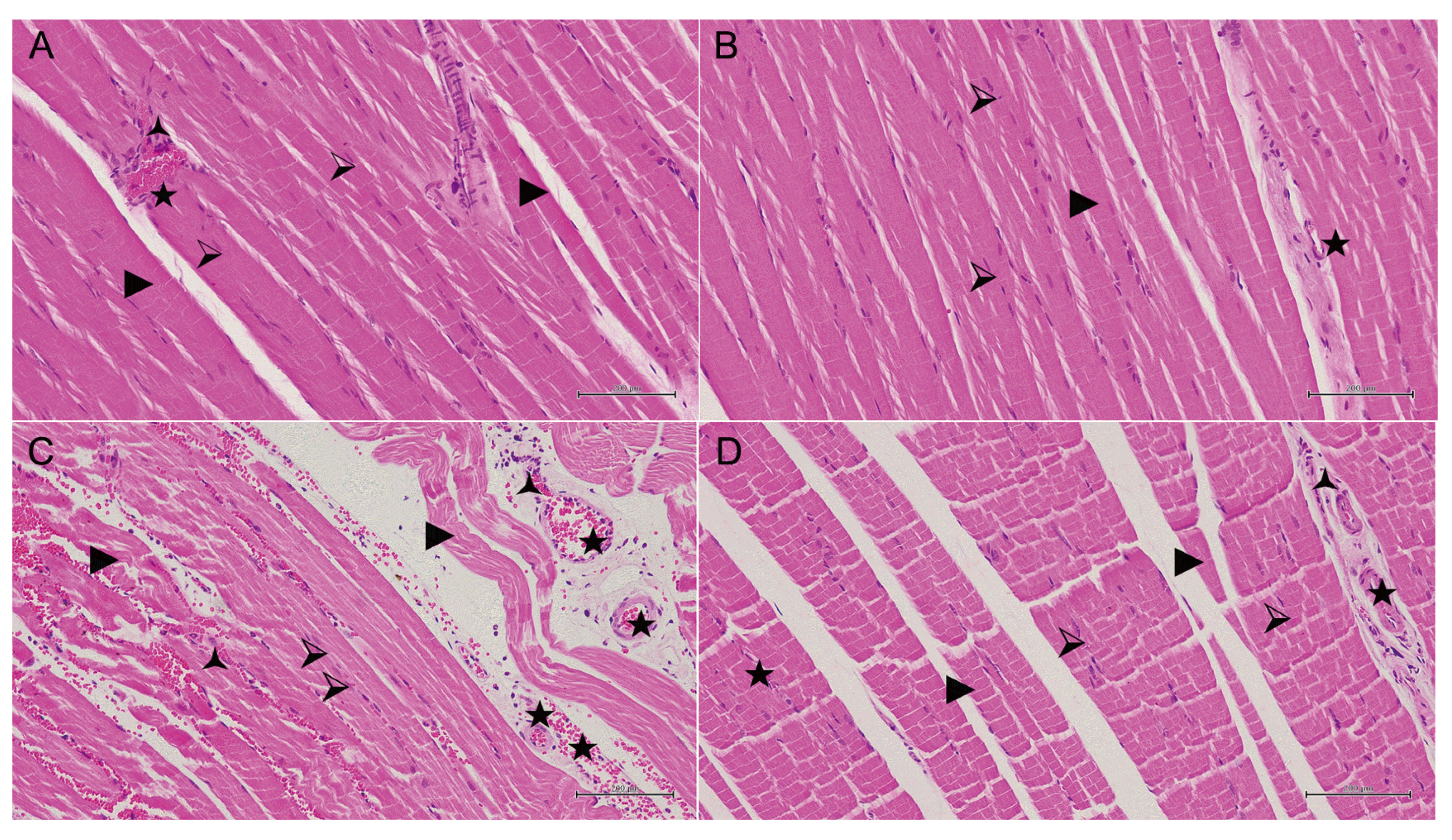1. Trevor AJ, Miller RD. Katzung BG, editor. 1998. General anesthetic. Basic and clinical pharmacology. 7th ed. Appleton & Lange;Stamford (CT): p. 409–423.
3. Krajčová A, Løvsletten NG, Waldauf P, Frič V, Elkalaf M, Urban T, Anděl M, Trnka J, Thoresen GH, Duška F. 2018; Effects of propofol on cellular bioenergetics in human skeletal muscle cells. Crit Care Med. 46:e206–e212. DOI:
10.1097/CCM.0000000000002875. PMID:
29240609.

4. Secor T, Safadi AO, Gunderson S. Gunderson S, editor. 2020. Propofol toxicity. StatPearls. StatPearls Publishing;Treasure Island (FL):
5. Hemphill S, McMenamin L, Bellamy MC, Hopkins PM. 2019; Propofol infusion syndrome: a structured literature review and analysis of published case reports. Br J Anaesth. 122:448–459. DOI:
10.1016/j.bja.2018.12.025. PMID:
30857601. PMCID:
PMC6435842.



6. Michel-Macías C, Morales-Barquet DA, Reyes-Palomino AM, Machuca-Vaca JA, Orozco-Guillén A. 2018; Single dose of propofol causing propofol infusion syndrome in a newborn. Oxf Med Case Reports. 2018:omy023. DOI:
10.1093/omcr/omy023. PMID:
29942532. PMCID:
PMC6007798.

7. Tezcan AH, Öterkuş M, Dönmez İ, Öztürk Ö, Yavuzekinci Z. 2018; A mild type propofol infusion syndrome presentation in critical care. Kafkas J Med Sci. 8:61–63. DOI:
10.5505/kjms.2018.32154.

8. Tezcan AH, Ozturk O, Adali Y, Erdem E, Yagmurdur H. 2016; Abstract PR462: the effects of N-acetylcysteine in a propofol infusion syndrome model in rats. Anesth Analg. 123(3 Suppl 2):586. DOI:
10.1213/01.ane.0000492849.43769.9e.
9. Khan FY. 2009; Rhabdomyolysis: a review of the literature. Neth J Med. 67:272–283. PMID:
19841484.

10. Ypsilantis P, Politou M, Mikroulis D, Lambropoulou M, Bougioukas I, Theodoridis G, Tsigalou C, Manolas C, Papadopoulos N, Bougioukas G, Simopoulos C. 2011; Attenuation of propofol tolerance conferred by remifentanil co-administration does not reduce propofol toxicity in rabbits under prolonged mechanical ventilation. J Surg Res. 168:253–261. DOI:
10.1016/j.jss.2009.08.020. PMID:
20036388.


12. Yapanoglu T, Adanur S, Ziypak T, Arslan A, Kunak CS, Alp HH, Suleyman B. 2015; The comparison of resveratrol and N-acetylcysteine on the oxidative kidney damage caused by high dose paracetamol. Lat Am J Pharm. 34:973–979.
16. Orrenius S, Burkitt MJ, Kass GE, Dypbukt JM, Nicotera P. 1992; Calcium ions and oxidative cell injury. Ann Neurol. 32 Suppl:S33–S42. DOI:
10.1002/ana.410320708. PMID:
1510379.

17. Gu H, Yang M, Zhao X, Zhao B, Sun X, Gao X. 2014; Pretreatment with hydrogen-rich saline reduces the damage caused by glycerol-induced rhabdomyolysis and acute kidney injury in rats. J Surg Res. 188:243–249. DOI:
10.1016/j.jss.2013.12.007. PMID:
24495844.


18. Reiter RJ. 1995; Oxidative processes and antioxidative defense mechanisms in the aging brain. FASEB J. 9:526–533. DOI:
10.1096/fasebj.9.7.7737461. PMID:
7737461.

19. Park SK, Kang JY, Kim JM, Park SH, Kwon BS, Kim GH, Heo HJ. 2018; Protective effect of fucoidan extract from Ecklonia cava on hydrogen peroxide-induced neurotoxicity. J Microbiol Biotechnol. 28:40–49. DOI:
10.4014/jmb.1710.10043. PMID:
29121706.


20. Mathews CK, Van Holde KE, Ahern KG. 2000. Biochemistry. 3rd ed. Addison Wesley Longman;San Francisco (CA):
21. Dutka TL, Lamb GD. 2004; Effect of low cytoplasmic [ATP] on excitation-contraction coupling in fast-twitch muscle fibres of the rat. J Physiol. 560(Pt 2):451–468. DOI:
10.1113/jphysiol.2004.069112. PMID:
15308682. PMCID:
PMC1665263.

22. Kumbasar S, Cetin N, Yapca OE, Sener E, Isaoglu U, Yilmaz M, Salman S, Aksoy AN, Gul MA, Suleyman H. 2014; Exogenous ATP administration prevents ischemia/reperfusion-induced oxidative stress and tissue injury by modulation of hypoxanthine metabolic pathway in rat ovary. Cienc Rural. 44:1257–1263. DOI:
10.1590/0103-8478cr20131006.

23. Ohkawa H, Ohishi N, Yagi K. 1979; Assay for lipid peroxides in animal tissues by thiobarbituric acid reaction. Anal Biochem. 95:351–358. DOI:
10.1016/0003-2697(79)90738-3. PMID:
36810.


24. Sedlak J, Lindsay RH. 1968; Estimation of total, protein-bound, and nonprotein sulfhydryl groups in tissue with Ellman's reagent. Anal Biochem. 25:192–205. DOI:
10.1016/0003-2697(68)90092-4. PMID:
4973948.


25. Skitek M, Kranjec I, Jerin A. 2014; Glycogen phosphorylase isoenzyme BB, creatine kinase isoenzyme MB and troponin I for monitoring patients with percutaneous coronary intervention - a pilot study. Med Glas (Zenica). 11:13–18. PMID:
24496335.

26. Totsuka M, Nakaji S, Suzuki K, Sugawara K, Sato K. 2002; Break point of serum creatine kinase release after endurance exercise. J Appl Physiol (1985). 93:1280–1286. DOI:
10.1152/japplphysiol.01270.2001. PMID:
12235026.

27. Baird MF, Graham SM, Baker JS, Bickerstaff GF. 2012; Creatine-kinase- and exercise-related muscle damage implications for muscle performance and recovery. J Nutr Metab. 2012:960363. DOI:
10.1155/2012/960363. PMID:
22288008. PMCID:
PMC3263635.

28. Grobben RB, Nathoe HM, Januzzi JL Jr, van Kimmenade RR. 2014; Cardiac markers following cardiac surgery and percutaneous coronary intervention. Clin Lab Med. 34:99–111. viiDOI:
10.1016/j.cll.2013.11.013. PMID:
24507790.

29. Siegel AJ, Silverman LM, Evans WJ. 1983; Elevated skeletal muscle creatine kinase MB isoenzyme levels in marathon runners. JAMA. 250:2835–2837. DOI:
10.1001/jama.1983.03340200069032. PMID:
6644963.


30. Ricchiuti V, Voss EM, Ney A, Odland M, Apple FS. 2004; Skeletal muscle expression of creatine kinase-B in end-stage renal disease. Clin Proteom. 1:33–39. DOI:
10.1385/CP:1:1:033.

31. Kiely PD, Bruckner FE, Nisbet JA, Daghir A. 2000; Serum skeletal troponin I in inflammatory muscle disease: relation to creatine kinase, CKMB and cardiac troponin I. Ann Rheum Dis. 59:750–751. DOI:
10.1136/ard.59.9.750. PMID:
11023449. PMCID:
PMC1753274.



32. Stelow EB, Johari VP, Smith SA, Crosson JT, Apple FS. 2000; Propofol-associated rhabdomyolysis with cardiac involvement in adults: chemical and anatomic findings. Clin Chem. 46:577–581. DOI:
10.1093/clinchem/46.4.577. PMID:
10759487.


33. Alpert JS, Thygesen K, Antman E, Bassand JP. 2000; Myocardial infarction redefined--a consensus document of The Joint European Society of Cardiology/American College of Cardiology Committee for the redefinition of myocardial infarction. J Am Coll Cardiol. 36:959–969. DOI:
10.1016/S0735-1097(00)00804-4. PMID:
10987628.

34. Hussein A, Ahmed AA, Shouman SA, Sharawy S. 2012; Ameliorating effect of DL-α-lipoic acid against cisplatin-induced nephrotoxicity and cardiotoxicity in experimental animals. Drug Discov Ther. 6:147–156. DOI:
10.5582/ddt.2012.v6.3.147. PMID:
22890205.


35. Mallard JM, Rieser TM, Peterson NW. 2018; Propofol infusion-like syndrome in a dog. Can Vet J. 59:1216–1222. PMID:
30410181. PMCID:
PMC6190180.


36. Jo KM, Heo NY, Park SH, Moon YS, Kim TO, Park J, Choi JH, Park YE, Lee J. 2019; Serum aminotransferase level in rhabdomyolysis according to concurrent liver disease. Korean J Gastroenterol. 74:205–211. DOI:
10.4166/kjg.2019.74.4.205. PMID:
31650796.


37. Wroblewski F. 1958; The clinical significance of alterations in transaminase activities of serum and other body fluids. Adv Clin Chem. 1:313–351. DOI:
10.1016/S0065-2423(08)60362-5. PMID:
13571034.

38. Pratt DS. Feldman M, Friedman LS, Brandt LJ, editors. 2016. Liver chemistry and function tests. Sleisenger and Fordtran's gastrointestinal and liver disease. 10th ed. Saunders/Elsevier;Philadelphia (PA): p. 1245–1246.

39. El-Ganainy SO, El-Mallah A, Abdallah D, Khattab MM, Mohy El-Din MM, El-Khatib AS. 2016; Elucidation of the mechanism of atorvastatin-induced myopathy in a rat model. Toxicology. 359-360:29–38. DOI:
10.1016/j.tox.2016.06.015. PMID:
27345130.

40. Farswan M, Rathod SP, Upaganlawar AB, Semwal A. 2005; Protective effect of coenzyme Q10 in simvastatin and gemfibrozil induced rhabdomyolysis in rats. Indian J Exp Biol. 43:845–848. PMID:
16235714.

41. Dickey DT, Muldoon LL, Doolittle ND, Peterson DR, Kraemer DF, Neuwelt EA. 2008; Effect of N-acetylcysteine route of administration on chemoprotection against cisplatin-induced toxicity in rat models. Cancer Chemother Pharmacol. 62:235–241. DOI:
10.1007/s00280-007-0597-2. PMID:
17909806. PMCID:
PMC2776068.


42. Chew DJ, Dibartola SP. Ettinger SJ, editor. 1989. Diagnosis and pathophysiology of renal disease. Textbook of veterinary internal medicine: Diseases of the dog and cat. 3rd ed. W.B. Saunders;Philadelphia (PA): p. 1893–1961.
43. Goulart M, Batoréu MC, Rodrigues AS, Laires A, Rueff J. 2005; Lipoperoxidation products and thiol antioxidants in chromium exposed workers. Mutagenesis. 20:311–315. DOI:
10.1093/mutage/gei043. PMID:
15985443.


45. Chaudry IH. 1982; Does ATP cross the cell plasma membrane. Yale J Biol Med. 55:1–10. PMID:
7051582. PMCID:
PMC2595991.


46. Fedelesová M, Ziegelhöffer A, Krause EG, Wollenberger A. 1969; Effect of exogenous adenosine triphosphate on the metabolic state of the excised hypothermic dog heart. Circ Res. 24:617–627. DOI:
10.1161/01.RES.24.5.617. PMID:
5770252.

47. Hou Q, Wang Y, Fan B, Sun K, Liang J, Feng H, Jia L. 2020; Extracellular ATP affects cell viability, respiratory O2 uptake, and intracellular ATP production of tobacco cell suspension culture in response to hydrogen peroxide-induced oxidative stress. Biologia. 75:1437–1443. DOI:
10.2478/s11756-020-00442-w.







 PDF
PDF Citation
Citation Print
Print





 XML Download
XML Download